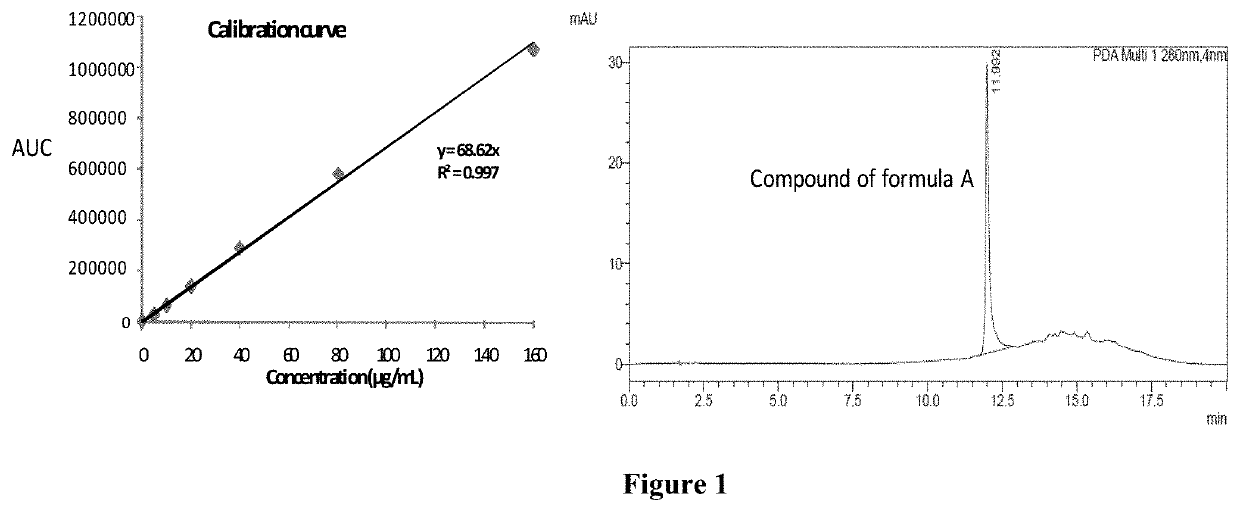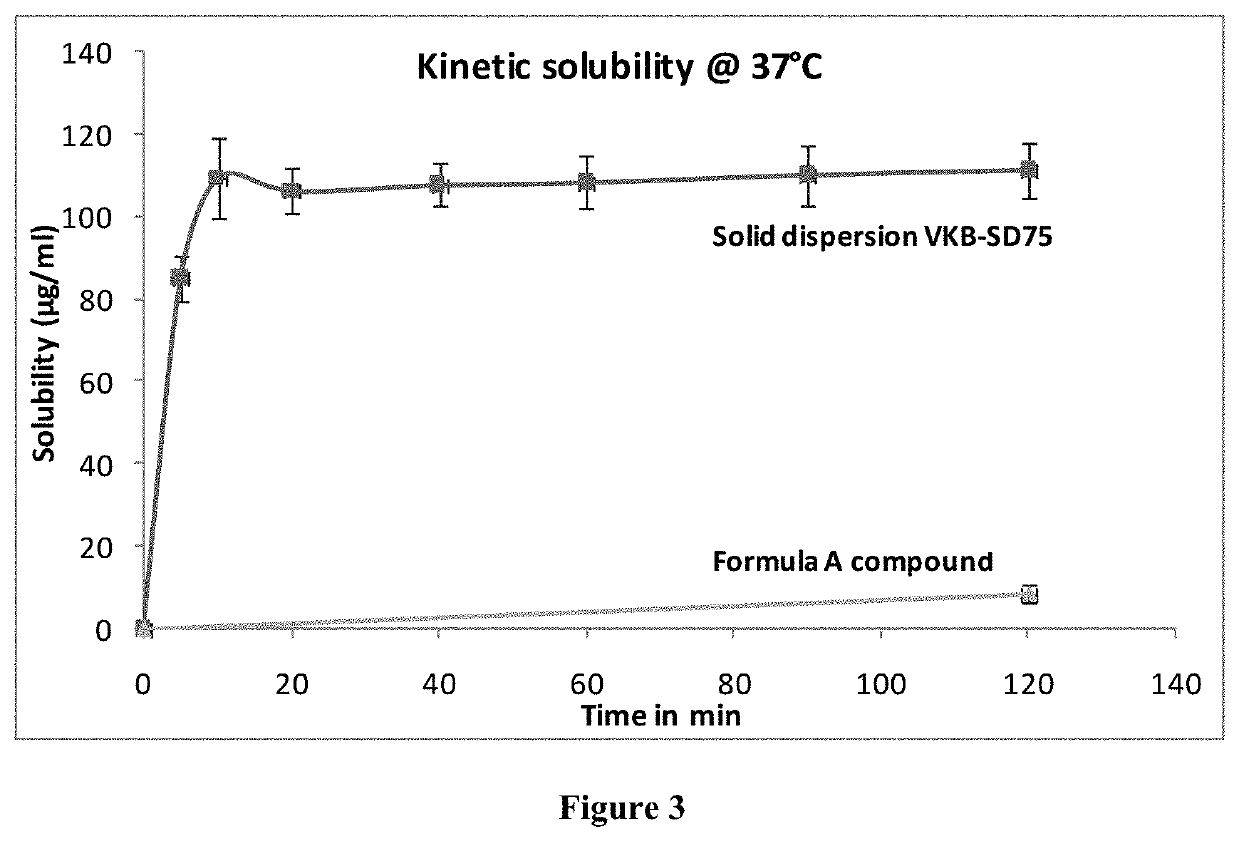Solid dispersion comprising an anticancer compound for improved solubility and efficacy
a technology of anticancer compound and solid dispersion, which is applied in the field of solid dispersion, can solve the problems of poor water solubility, limiting factors of the dissolution property of the compound, and the inability to improve the solubility and efficacy of poorly water soluble drugs, so as to enhance the aqueous solubility and thus the dissolution profile of the compound, and enhance the in-vivo efficacy of the compound
- Summary
- Abstract
- Description
- Claims
- Application Information
AI Technical Summary
Benefits of technology
Problems solved by technology
Method used
Image
Examples
example 1
of Anticancer Compound of Formula A
[0070]Briefly, a 30 g of rohitukine (0.09834 moles) was dissolved in a solution of 500 ml methanol containing 38.5 g (0.69 moles, 7 equiv.) of KOH. To this mixture was added, 17.19 g (0.098 moles) of 2,6-dichlorobenzaldehyde and the resultant mixture was stirred at 100° C. for 3-4 hours. After completion of the reaction, the mixture was cooled and neutralized with 6 N HCl. The precipitate was filtered, and washed with 50 ml of methanol:water (30:70) to remove unreacted aldehyde and further washed with acetone. Finally, it was recrystallized using methanol:chloroform (20:80) to get compound of formula A in 62% yield (28 g).
example 2
od for Analysis of Compound of Formula A
[0071]For the analysis of compound of formula A, the reverse phase HPLC based method was developed. The HPLC analysis employed reversed-phase C18 Chromolith® performance RP-18e (100×4.6 mm, 5 micron, Merck) column using photodiode detector (SPD-M20A, Prominence, Shimadzu). Gradient elution (20 min.) with mobile phase A was methanol and B was 0.1% v / v formic acid in water. The gradient system comprises: 70% B for 0-2 min, 70-30% B from 2-10 min, 30% B from 10-12 min, 30-70% B from 12-17 min, 70% B from 17-20 min. The injection volume was 3.0 μL (SIL-20A HT Prominence auto-sampler) with the flow rate of 1.0 ml / min (pump, LC-6AD Shimadzu liquid chromatography). The column oven temperature was kept at 37° C. (column oven, CTO-10ASVP). As shown in FIG. 1, the retention time of compound of Formula A was 11.99 min and calibration curve was plotted in a range from 1-160 μg / ml.
example 3
ent Stability of Compound of Formula A
[0072]The stability of compound was performed in pH 1.2 buffer, pH 4.0 buffer, phosphate buffer pH 6.8, phosphate buffered saline pH 7.4, SGF (pH 1.2), SIF (pH 6.8) and plasma up to 24 hrs. The % compound hydrolyzed or degraded was determined by HPLC analysis. Results of stability studies indicated that compound was stable at all the conditions tested (the % drug remaining was >95%).
PUM
| Property | Measurement | Unit |
|---|---|---|
| temperature | aaaaa | aaaaa |
| pH | aaaaa | aaaaa |
| solubility | aaaaa | aaaaa |
Abstract
Description
Claims
Application Information
 Login to View More
Login to View More - R&D
- Intellectual Property
- Life Sciences
- Materials
- Tech Scout
- Unparalleled Data Quality
- Higher Quality Content
- 60% Fewer Hallucinations
Browse by: Latest US Patents, China's latest patents, Technical Efficacy Thesaurus, Application Domain, Technology Topic, Popular Technical Reports.
© 2025 PatSnap. All rights reserved.Legal|Privacy policy|Modern Slavery Act Transparency Statement|Sitemap|About US| Contact US: help@patsnap.com



